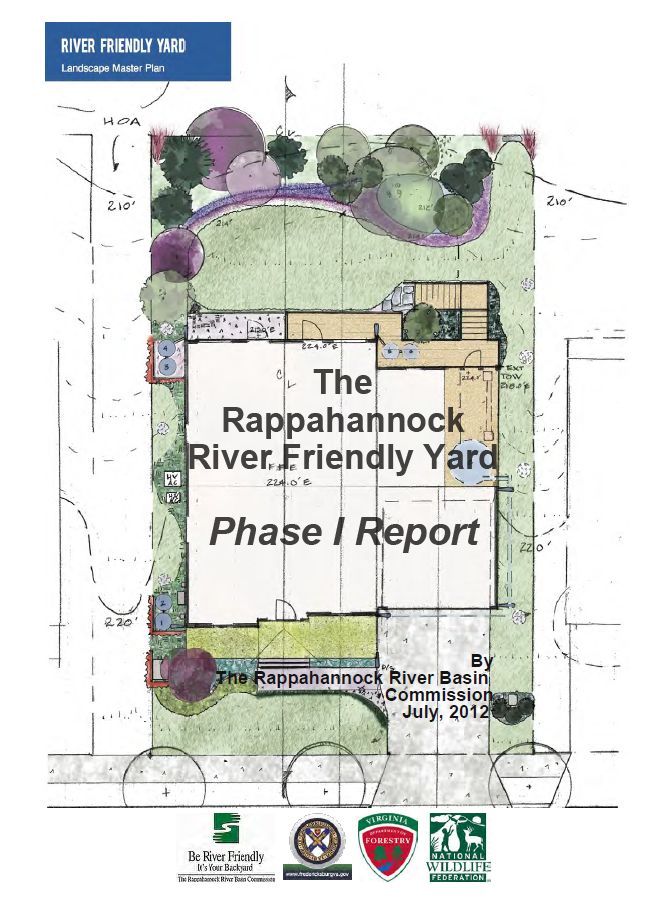American Climate Partners launched SoilKeepers, a regenerative landscape management service 10 years ago. SoilKeepers began with a cooperative project, The River Friendly Yard, (2011-2013) conceived by the forerunner of American Climate Partners, Conserv, with Partners Rappahannock River Basin Commission, Virginia Department of Forestry, National Wildlife Federation, City of Fredericksburg, Friends of the Rappahannock, George Washington University, and University of Mary Washington.

In the study, the project team described the elements of a “river friendly yard” – to include now well known design items such as permeable pavers, rain gardens, and an element we called soil amendment. Sensing an opportunity for significant good, the Board of Directors of Conserv launched the SoilKeepers program with a focus on how the health of the biology of the soil ecosystem could be managed through emerging types of organic and mineral amendments.
Since then many of SoilKeepers customers found their way to the service because of their human health concerns about the use of synthetic amendments used in lawn sprays. Recently, one of our clients called us concerned about sprays on a common area we had been managing regeneratively.
We were concerned not only about the micro (nematodes, protozoa, etc.) and macroscopic animals (humans, pets, worms) that lived in the area we managed, but also the health of our own employees, now working in an area recently sprayed. So we asked that the formulation used be sent to us.
The answer – urea, prodiamine, and dicamba. Prodiamine is a preemergent herbicide of the dinitroaniline class.
A 2020 journal article in Environmental Science and Pollution Research, Dinitroaniline herbicides: a comprehensive review of toxicity and side effects on animal non‑target organisms, states:
“The studies conducted so far seem to indicate a systemic effect of dinitroaniline exposure, which impacts multiple biological levels and diverse organs and functions, with potential and underestimated consequences for wild species, alters population and community dynamics and poses a risk to biodiversity and human health. This raises the question of whether exposure to these herbicides, which accumulate in soil over time as a result of continued applications, can be harmful and have potential direct (feeding on contaminated prey or ingestion through contact) and indirect (depletion of food) effects on population of non-target species, which provide ecosystem services by recycling nutrients, controlling pests and regulating interspecific relationships (prey-predator, host–pathogen, mutualistic association) in the environmental system. In addition, because some metabolic pathways, such as oxidative phosphorylation, and cellular mechanism, such as phagocytosis, are ubiquitous additional analyses are needed to clarify the effects of chronic exposure to humans through direct contact or daily ingestion of residual doses in food (He et al. 2020)… The studies presented here reinforce the warning that herbicides, although important to agriculture, should be used with greater caution, applied at recommended rates and replaced, as much as possible, with other environmentally and biodiversity-friendly methods.”
Regarding Dicamba, a 2020 journal article in the International Journal of Epidemiology, Dicamba use and cancer incidence in the agricultural health study: an updated analysis, states:
“In a large prospective cohort, use of the herbicide dicamba was associated with increased risk of liver and intrahepatic bile duct cancers. Dicamba use was also inversely associated with myeloid leukaemia. Elevated risk of CLL was associated with high dicamba exposure, but this association was only observed in unlagged analyses. We additionally observed associations with tonsil cancer, lymphocytic leukaemia and MCL, though these analyses were based on fewer than 20 dicamba-exposed cases. With additional follow-up, we did not see evidence for elevated risks for lung and colon cancer that have been previously reported in the cohort. Future work should focus on replication of these findings and understanding whether the mechanisms for carcinogenicity reported in animal models, such as oxidative stress and DNA damage, are relevant in humans. Rigorous epidemiologic studies of dicamba are necessary given the potential for widespread agricultural exposures with the introduction of dicamba-resistant crops.”
At SoilKeepers we strive to employ the precautionary principle. Practially this means we strive to synchronize our methods with life cycles of plants and the soil ecosystem and use materials that are naturally occuring.
